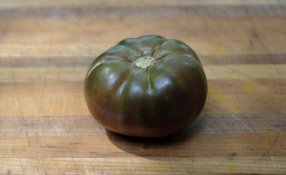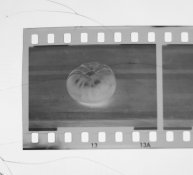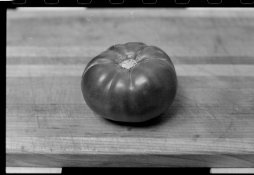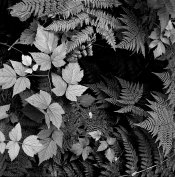I’m going to condense the saga a bit, but a few years back I went totally crazy into analog photography in the worst possible way: indulging in massive GAS; switching film stocks, ISO/EI, developers, cameras and formats every third roll; spending way too much on hardware then cheaping out on consumables, and ultimately sticking most of my developed rolls in PrintFiles and throwing them in a drawer with no real evaluation of the negatives being suitable for either scanning or darkroom printing. What printing I did do was totally haphazard, no notes, random expired papers, overall slop and hastiness… I did learn a fair bit and occasionally got some decent results, but with massive inefficiency, even by amateur film standards.
Fast forward to today, I’m ready to try again and do it right this time. I’ve got a much better darkroom space set up, a handful of reliable 35mm and 6x6 cameras in good working order, and am looking to “dial in” two film stocks to start, ORWO DN21 and Delta 100 (maybe adding Ultrafine 400 if I need something faster, but more likely I’ll just stick with digital for low-light). I’ll be sticking to HC-110 because I have a ton of it, and Ilford’s new MGRC Deluxe for printing because the dmax and tone is awesome even in my incompetent hands.
So, I’m looking for advice, tips, and resources for a more systematic approach, and some “next step” ideas on how to move beyond beginner status. Right now, I’m totally comfortable with actually shooting, with the mechanics of developing (knock on wood, but I’ve never had a gross development misfire), and with making an enlargement – but my darkroom printing is pretty hit or miss with tons of bad test sheets wasted. I’m not looking for full-on zone system or the like, but it’s hard to find tutorials in between that kind of complexity, and ‘made my first enlargement, lol, and didn’t drink the fixer’-style YouTube junk.
To get an idea of what I’m after, let’s look at contact sheets: I did far too few of these in the past, which makes that pile of backlog rolls really forbidding. So step one, discipline myself to make contact sheets of every roll. But: how can I make them most useful and informative, to help me refine my process? I have a nice heavy glass contact printer – will they be sharper if I also taken out of the PrintFile, even though one can print through those? (And is 35mm too small for sharpness to be visible without enlargement anyway?) Are contact sheets best done at “minimum time for maximum black through filmbase + fog” or some other approach? What grade?
And printing, even for “straight” prints, proofs, whatever you want to call them, no dodging or burning, just trying to see if it’s a good negative – I can handle f-stop time sequences / test strips, pretty much, but what grade do you start with (assuming I’m not ready for split-grade printing yet)? Should every frame on a roll be printable at the same grade, or only those frames done under similar light, or it’s a per-frame thing? If I bracket exposures, how can I compare them usefully? If I’m constantly printing at 0 or .5 or 4.5 or 5, what do I need to change in my film development and/or exposure? Etc. etc. – I want to close the “feedback” loop so stuff gets better _and_ easier.
So again, anything from tips & rules of thumb, to a solid film-testing / personal ISO system that isn’t totally crazy-complex is appreciated. Books, websites, sternly avuncular advice – bring it, please. Some sensible way to organize negatives, test prints etc. would also be cool. I bulk load, so I can do short rolls for more efficient turnaround, if that helps.
Fast forward to today, I’m ready to try again and do it right this time. I’ve got a much better darkroom space set up, a handful of reliable 35mm and 6x6 cameras in good working order, and am looking to “dial in” two film stocks to start, ORWO DN21 and Delta 100 (maybe adding Ultrafine 400 if I need something faster, but more likely I’ll just stick with digital for low-light). I’ll be sticking to HC-110 because I have a ton of it, and Ilford’s new MGRC Deluxe for printing because the dmax and tone is awesome even in my incompetent hands.
So, I’m looking for advice, tips, and resources for a more systematic approach, and some “next step” ideas on how to move beyond beginner status. Right now, I’m totally comfortable with actually shooting, with the mechanics of developing (knock on wood, but I’ve never had a gross development misfire), and with making an enlargement – but my darkroom printing is pretty hit or miss with tons of bad test sheets wasted. I’m not looking for full-on zone system or the like, but it’s hard to find tutorials in between that kind of complexity, and ‘made my first enlargement, lol, and didn’t drink the fixer’-style YouTube junk.
To get an idea of what I’m after, let’s look at contact sheets: I did far too few of these in the past, which makes that pile of backlog rolls really forbidding. So step one, discipline myself to make contact sheets of every roll. But: how can I make them most useful and informative, to help me refine my process? I have a nice heavy glass contact printer – will they be sharper if I also taken out of the PrintFile, even though one can print through those? (And is 35mm too small for sharpness to be visible without enlargement anyway?) Are contact sheets best done at “minimum time for maximum black through filmbase + fog” or some other approach? What grade?
And printing, even for “straight” prints, proofs, whatever you want to call them, no dodging or burning, just trying to see if it’s a good negative – I can handle f-stop time sequences / test strips, pretty much, but what grade do you start with (assuming I’m not ready for split-grade printing yet)? Should every frame on a roll be printable at the same grade, or only those frames done under similar light, or it’s a per-frame thing? If I bracket exposures, how can I compare them usefully? If I’m constantly printing at 0 or .5 or 4.5 or 5, what do I need to change in my film development and/or exposure? Etc. etc. – I want to close the “feedback” loop so stuff gets better _and_ easier.
So again, anything from tips & rules of thumb, to a solid film-testing / personal ISO system that isn’t totally crazy-complex is appreciated. Books, websites, sternly avuncular advice – bring it, please. Some sensible way to organize negatives, test prints etc. would also be cool. I bulk load, so I can do short rolls for more efficient turnaround, if that helps.


 .
.





